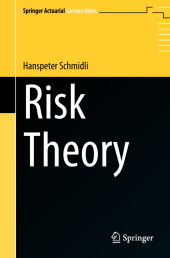 Neuerscheinungen 2018Stand: 2020-02-01 |
Schnellsuche
ISBN/Stichwort/Autor
|
Herderstraße 10
10625 Berlin
Tel.: 030 315 714 16
Fax 030 315 714 14
info@buchspektrum.de |

Hanspeter Schmidli
Risk Theory
1st ed. 2017. 2018. xii, 242 S. 5 SW-Abb. 235 mm
Verlag/Jahr: SPRINGER, BERLIN; SPRINGER INTERNATIONAL PUBLISHING 2018
ISBN: 3-319-72004-X (331972004X)
Neue ISBN: 978-3-319-72004-3 (9783319720043)
Preis und Lieferzeit: Bitte klicken
This book provides an overview of classical actuarial techniques, including material that is not readily accessible elsewhere such as the Ammeter risk model and the Markov-modulated risk model. Other topics covered include utility theory, credibility theory, claims reserving and ruin theory. The author treats both theoretical and practical aspects and also discusses links to Solvency II.
Written by one of the leading experts in the field, these lecture notes serve as a valuable introduction to some of the most frequently used methods in non-life insurance. They will be of particular interest to graduate students, researchers and practitioners in insurance, finance and risk management.
1 Risk Models.- 2 Utility Theory.- 3 Credibility Theory.- 4 Claims Reserving.- 5 The Cramér-Lundberg Model.- 6 The Renewal Risk Model.- 7 The Ammeter Risk Model.- 8 Change of Measure Techniques.- 9 The Markov Modulated Risk Model.- A Stochastic Processes.- B Martingales.- C Renewal Processes.- D Brownian Motion.- E Random Walks and the Wiener-Hopf Factorisation.- F Subexponential Distributions.- G Concave and Convex Functions.- Table of Distribution Functions.- References. Indices.
Hanspeter Schmidli is Professor of Stochastics and Actuarial Mathematics at the University of Cologne, Germany. He is one of the leading experts in the areas of optimization in insurance and ruin theory. He has published intensively in risk theory and related fields, having (co-)authored Stochastic Control in Insurance (Springer, 2008) and Stochastic Processes for Insurance and Finance (Wiley, 1999), which continue to be widely used resources.


